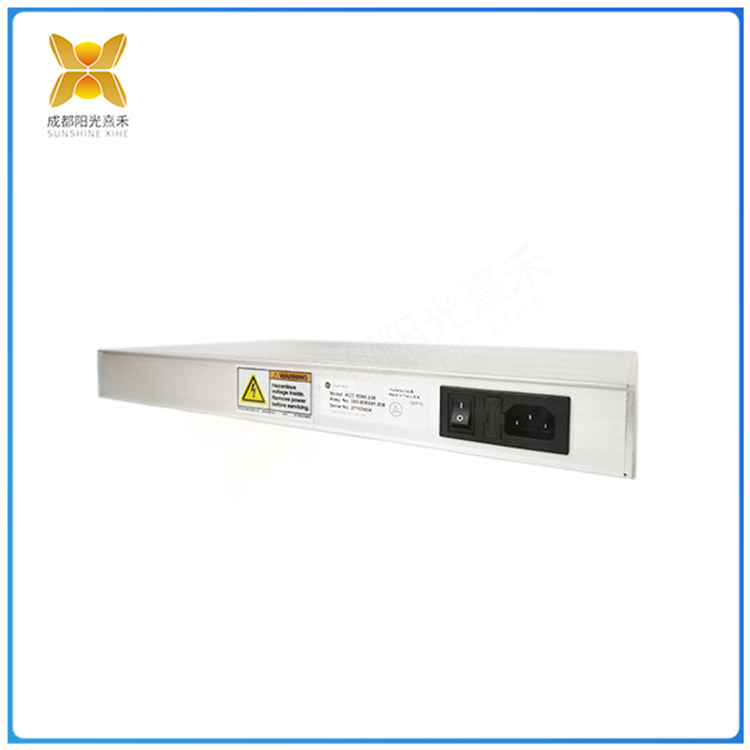Description
IS215UCVHM06A 采用运行频率为 1067 MHz (1.06 GHz) 的 Intel 超低电压 CeleronTM 处理器
功能说明
IS215UCVHM06A是GE公司开发的VME处理器控制卡。它是Mark VI 控制系统的一部分。它是一种专用的单插槽板,在较大系统的控制和通信中发挥着至关重要的作用。它采用运行频率为 1067 MHz (1.06 GHz) 的 Intel 超低电压 CeleronTM 处理器,并配有 128 MB 闪存和 1 GB 同步动态随机存取存储器 (SDRAM)。紧凑的设计有效地利用其资源来促进系统的整体功能。
特征
UCVH 的特点之一是其双以太网连接。该板配备了两个 10BaseT/100BaseTX 以太网端口,每个端口均采用 RJ-45 连接器。这些以太网端口充当网络通信的网关,促进系统内外的连接和数据交换。
第一个以太网端口在建立与通用设备主机 (UDH) 的连接方面发挥着关键作用,该主机用于配置和点对点通信。UCVH 利用此端口与 UDH 交互,允许配置对系统操作至关重要的各种参数和设置。此外,第一个以太网端口有利于网络内对等设备之间的直接通信,有助于信息的无缝交换和协作操作。
UCVH 上的第二个以太网端口在不同的 IP 逻辑子网上运行。这种分离确保了清晰的通信边界,并有助于有效管理网络流量。该以太网端口有多种用途,其中之一是它能够与 Modbus(工业自动化中广泛使用的通信协议)一起使用。此外,该端口还可用于专用以太网全局数据(EGD)网络,从而增强系统特定组件内数据传输的安全性和效率。
配置第二个以太网端口是通过工具箱完成的,工具箱是一组有助于系统管理和定制的软件工具。在启动过程中,控制器会验证通过工具箱建立的配置设置,确保它们与硬件功能和预期的网络架构保持一致。此验证过程可确保控制器根据配置的参数发挥最佳功能。
IS215UCVHM06A 采用运行频率为 1067 MHz (1.06 GHz) 的 Intel 超低电压 CeleronTM 处理器
Function description
The IS215UCVHM06A is a VME processor control card developed by GE. It is part of the Mark VI control system. It is a dedicated single-slot board that plays a crucial role in the control and communication of larger systems. It uses an Intel ultra-low-voltage CeleronTM processor running at 1067 MHz (1.06 GHz) and comes with 128 MB of flash memory and 1 GB of synchronous dynamic random access memory (SDRAM). The compact design effectively utilizes its resources to contribute to the overall functionality of the system.
trait
One of the features of UCVH is its dual Ethernet connection. The board is equipped with two 10BaseT/100BaseTX Ethernet ports, each with an RJ-45 connector. These Ethernet ports act as gateways for network communications, facilitating connectivity and data exchange inside and outside the system.
The first Ethernet port plays a key role in establishing a connection to the Universal Device Host (UDH), which is used for configuration and point-to-point communication. UCVH uses this port to interact with UDH, allowing the configuration of various parameters and Settings that are critical to system operation. In addition, the first Ethernet port facilitates direct communication between peer devices within the network, facilitating the seamless exchange of information and collaborative operations.
The second Ethernet port on UCVH runs on a different IP logical subnet. This separation ensures clear communication boundaries and helps to effectively manage network traffic. The Ethernet port has several uses, one of which is its ability to work with Modbus, a communication protocol widely used in industrial automation. In addition, the port can be used in dedicated Ethernet Global Data (EGD) networks to enhance the security and efficiency of data transfer within specific components of the system.
Configuring the second Ethernet port is done through the Toolbox, a set of software tools that help with system administration and customization. During startup, the controller validates the configuration Settings established through the toolkit to ensure that they are consistent with hardware functionality and the expected network architecture. This verification process ensures that the controller functions optimally according to the configured parameters.

购买咨询热线/Phone:18859254943
邮箱/Email:sales@ygdcs.com
地址:成都高新区天益街北巷52号附14号2层





 购买咨询热线/Phone:
购买咨询热线/Phone: 邮箱/Email:
邮箱/Email: 地址:
地址:


